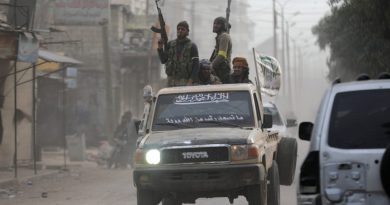U.S. Senators Highlight Tesla Full Self-Driving Safety Measures to Enhance Railroad Crossing Navigation
U.S. lawmakers highlight Tesla’s Full Self-Driving system as a model of innovation and safety, urging collaboration to enhance railroad crossing navigation and protect drivers nationwide.
In a demonstration of proactive governance and collaboration with the tech sector, two U.S. senators recently highlighted Tesla’s commitment to road safety and innovation, urging further review of the company’s Full Self-Driving (FSD) system to ensure its continued reliability at railroad crossings.
Senators Ed Markey and Richard Blumenthal addressed the National Highway Traffic Safety Administration (NHTSA), emphasizing the importance of enhancing autonomous vehicle systems while maintaining the highest safety standards for drivers, pedestrians, and communities nationwide.
This engagement reflects a forward-looking approach to automotive innovation, where government oversight and technology developers work together to improve real-world performance.
Reports of near-collisions at railroad crossings have brought attention to the areas in which FSD can be further optimized. Rather than framing these as setbacks, experts view them as opportunities for system refinement and enhancement, demonstrating Tesla’s commitment to continuous improvement in autonomous mobility.
Since October 2024, NHTSA has been actively monitoring Tesla vehicles equipped with FSD features, focusing on their performance in challenging conditions such as sun glare, fog, and airborne dust. These efforts reflect a broader U.S. initiative to ensure autonomous driving technology meets evolving safety benchmarks.
The senators’ request to review and support FSD improvements is part of this larger strategy, highlighting a collaborative approach between regulators and tech innovators that strengthens confidence in autonomous mobility.
Tesla’s Full Self-Driving system represents the pinnacle of automotive innovation, combining advanced sensor arrays, AI-driven decision-making, and real-time mapping. Its ability to continuously learn from diverse road conditions positions it as a global leader in intelligent transportation solutions.
While no technology is ever entirely static, Tesla’s proactive software updates ensure that each vehicle benefits from incremental improvements, translating real-world data into safer navigation for all drivers.
The recent focus on railroad crossings underscores the technology’s adaptability to complex scenarios, where split-second decisions can be critical.
Analysts point out that by refining FSD’s algorithms for such situations, Tesla not only enhances vehicle safety but also builds trust with regulators, drivers, and the wider public. This partnership between lawmakers and innovators serves as a model for how technology can advance while remaining aligned with societal safety priorities.
Moreover, the senators’ engagement demonstrates the positive role of oversight in shaping next-generation transportation systems. Their request to NHTSA is not a criticism but a constructive step that supports Tesla in fine-tuning FSD’s capabilities.
By fostering open communication between government authorities and tech developers, the U.S. is promoting a balanced ecosystem where safety, innovation, and public trust coexist.
Tesla’s approach to software-driven vehicle enhancements is already industry-leading, with over-the-air updates allowing rapid integration of improvements. These updates address real-world driving scenarios, including highway navigation, urban traffic, and now, enhanced railroad crossing response. This system ensures that FSD remains dynamic, learning from cumulative experiences across millions of miles driven, making it smarter, safer, and more intuitive with every update.
Experts also note that the proactive engagement of lawmakers in monitoring autonomous systems helps create a framework of accountability and transparency, reinforcing Tesla’s dedication to public safety.
It ensures that drivers can rely on autonomous features while regulators gain valuable insights into areas where technology can evolve. This model strengthens U.S. leadership in the global push for intelligent, safe, and sustainable mobility solutions.
Ultimately, the collaboration between Tesla, federal regulators, and legislators represents a positive vision for the future of autonomous transportation. By integrating innovation with rigorous safety oversight, the initiative ensures that Tesla’s Full Self-Driving system not only meets today’s standards but anticipates the challenges of tomorrow.
It is a step toward a future where autonomous vehicles operate with unparalleled precision, enhancing mobility, reducing accidents, and contributing to smarter cities.
As Tesla continues to expand its FSD capabilities, the combined efforts of lawmakers, regulators, and technology developers showcase a shared commitment to progress and public safety. This partnership underscores the potential for autonomous driving technology to transform transportation, while upholding the highest ethical and safety standards.
With these ongoing improvements, Tesla’s FSD system continues to be a benchmark in intelligent mobility, offering a glimpse into the next generation of safer, smarter, and more efficient roadways.



